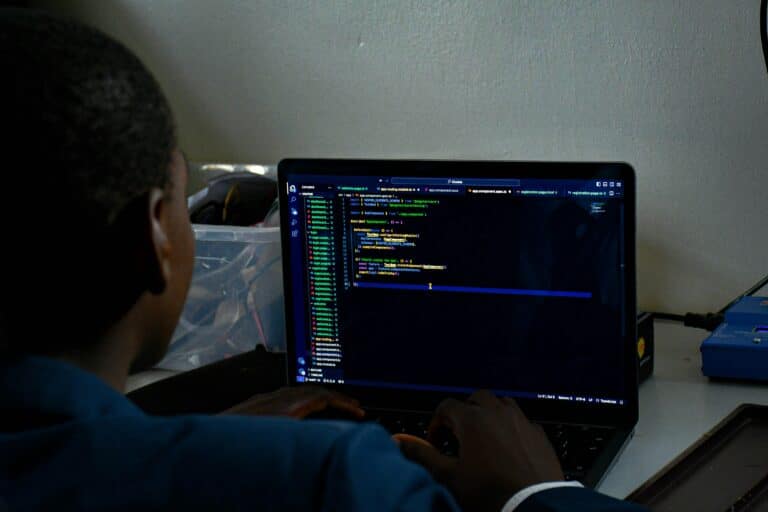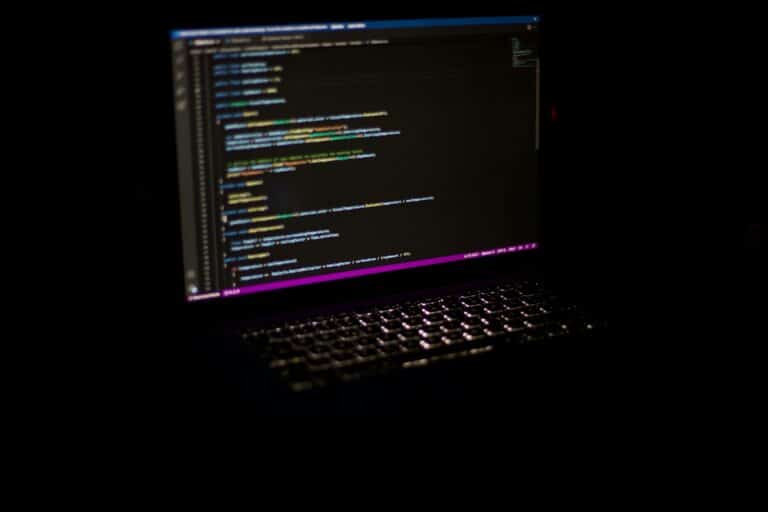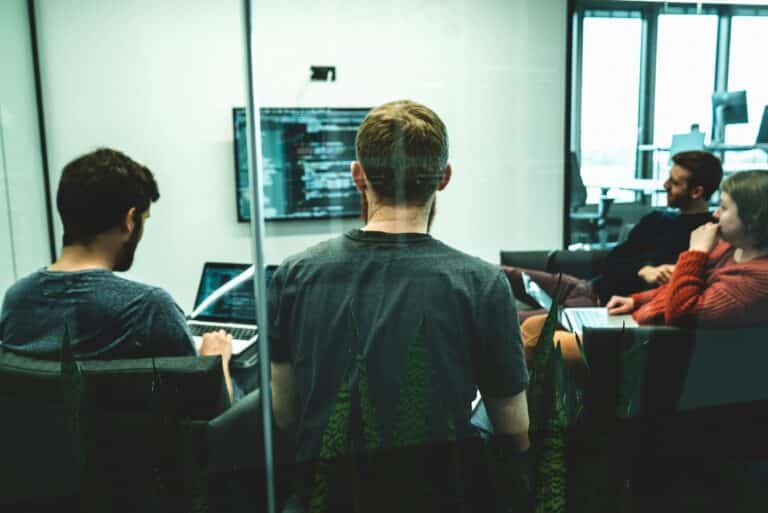If you’re a software developer, you’re well aware that coding can be an intense, often isolating endeavor. 🧠 Distractions are the enemy, focus is the ally. However, achieving and maintaining this focus while navigating complex codebases is not always an easy task. In this in-depth exploration, we delve into the psychology of distraction-free coding, and how you can harness it to maximize your productivity and focus.
Coding requires a substantial degree of concentration, which is easily disrupted. You’re engrossed in a tricky part of your code, fingers flying over your keyboard, when suddenly, a new Slack message, email notification, or perhaps a ping on your mobile phone 📱 interrupts your flow. The focus is shattered, the code is forgotten, and productivity slips through your fingers like sand. Sound familiar? This, in essence, is the power of distraction, and it’s a force to be reckoned with.
This article aims to offer a deep understanding of the psychology behind these distractions and provide practical techniques to maintain focus during coding sessions. Whether you’re a seasoned developer or an aspiring coder, the information within this piece can empower you to gain control over your focus, ultimately paving the way for improved productivity and superior code quality.
Understanding the Psychology of Distractions
Before we can combat distractions, we need to understand them. Why do our brains pay attention to a sudden Slack message or an incoming email more than the code that we’re working on? 💭 The answer lies in the realms of our minds, specifically in the psychology of distractions. In the upcoming section, we’ll dissect the inner workings of our attention and the factors that cause it to stray, offering an in-depth examination of why distractions are so powerful and how they impact our coding efforts.

Strategies for Achieving Distraction-Free Coding
Understanding the psychology of distractions is one side of the coin; the other is implementing strategies to achieve distraction-free coding. 💡 We’ll discuss several techniques, from creating a conducive coding environment to employing specific mindfulness practices, that can help you stay focused and productive. Whether it’s minimizing noise, managing your notifications, or establishing a consistent coding routine, these strategies are designed to equip you with the tools you need to combat distractions effectively.
Enhancing Productivity and Focus in Coding
Finally, we’ll explore the link between distraction-free coding and productivity. What benefits does maintaining a consistent focus offer? How can it boost your coding productivity and improve the quality of your work? More importantly, how can you sustain this level of productivity and focus over the long term? 🚀 We’ll answer these questions and more, providing you with a comprehensive understanding of how mastering distraction-free coding can significantly enhance your coding prowess and overall productivity.
In the vast and complex world of coding, distractions are an inevitable part of the landscape. However, by understanding the psychology behind these interruptions and employing strategies to minimize their impact, we can master the art of distraction-free coding. This mastery, in turn, can unleash our true potential as coders, allowing us to produce high-quality, efficient code with greater consistency and less stress.
So, are you ready to delve into the psychology of distraction-free coding and take your productivity to new heights? Let’s get started. 🚀
Introduction: Diving into the World of Distraction-Free Coding
As we delve into the intricate sphere of coding, there is one aspect that often goes overlooked, yet is crucial for any programmer’s productivity and focus: the ability to code without distractions. This can be a significant challenge given the myriad of distractions that surround us in our digital environment. But, what if we told you that the secret to distraction-free coding lies not in the perfect workspace or the most advanced coding tools, but rather in your mind? In this article, we will explore the fascinating psychology behind distraction-free coding and how you can master it to enhance your productivity and focus.
To fully comprehend the concept, it is vital to understand the mechanisms of distractions and their impact on a programmer’s cognitive function. Distractions can be anything from a buzzing phone, constant email notifications, social media alerts, or even a noisy environment. Each time we divert our attention from our coding task to attend to these distractions, our brain needs to exert extra effort to regain focus, which can significantly hinder productivity and quality of work.
But don’t worry, as all hope is not lost! By diving deep into the psychology of focus and concentration, we can equip ourselves with techniques and strategies to minimize these distractions and ultimately improve our coding skills. This journey might be challenging, but the rewards are surely worth the effort.
The Psychology Behind Distractions: An In-depth Look
Understanding the psychology of distraction is the first step towards achieving distraction-free coding. The human brain is wired to respond to stimuli, and distractions are simply stimuli that are not related to the task at hand. A study by the University of California, Irvine, found that it takes an average of 23 minutes to regain focus after being distracted. This suggests that even brief interruptions can have a significant impact on productivity.
Our brains are designed to pay attention to new information. This is an evolutionary trait that allowed our ancestors to respond quickly to threats. However, in our modern world, this trait can be more of a hindrance than a help. With a constant stream of new information from our digital devices, our brains are continually shifting attention, making it difficult to concentrate on a single task like coding.
Another factor contributing to distraction is our brain’s tendency to seek pleasure and avoid pain. Coding can be a complex and challenging task, and it’s easy for our minds to drift towards more enjoyable activities. However, by understanding these psychological processes, we can implement strategies to counteract them and improve our focus and productivity while coding.
Building a Distraction-Free Mindset: The Art of Focus and Concentration
The foundation of distraction-free coding lies in developing a mindset that encourages focus and concentration. This can be achieved by understanding and implementing various psychological principles and techniques. One such principle is the concept of “flow”, defined by psychologist Mihaly Csikszentmihalyi as a state of complete immersion in an activity. Achieving this state of flow while coding can significantly enhance productivity and satisfaction.
The first step in cultivating a state of flow is to eliminate potential distractions in your physical and digital environment. This could mean turning off notifications on your devices, creating a quiet workspace, or using tools and apps that encourage focus. However, remember that it’s not just about creating the perfect environment but also about training your mind to resist the allure of distractions.
Another technique to bolster concentration is the Pomodoro Technique, developed by Francesco Cirillo. This method involves working for a set period, typically 25 minutes, then taking a short break. This cycle is repeated several times before taking a longer break. This technique is effective because it aligns with our brain’s natural attention span and helps maintain a high level of productivity over extended periods.
Strategies for Distraction-Free Coding: A Comparative Analysis
| Strategy | Pros | Cons |
|---|---|---|
| Eliminating external distractions | Can significantly reduce the number of interruptions during coding | Not always feasible in all environments or situations |
| Using focus-boosting tools and apps | Can help maintain focus and productivity | Some may find these tools more distracting than helpful |
| Implementing the Pomodoro Technique | Aligns with the brain’s natural attention span, helps maintain high productivity | May not work well for tasks requiring prolonged concentration |
| Practicing mindfulness and meditation | Helps train the mind to resist distractions, enhances overall mental well-being | Requires regular practice and commitment |
To explore these strategies further and gain a deeper understanding of how to implement them, I recommend watching the YouTube video “10 Tips for Learning HOW TO CODE More Effectively and Quickly” by CS Dojo.
Embracing Mindfulness for Distraction-Free Coding
Mindfulness is a powerful tool for achieving distraction-free coding. It involves being fully present and engaged in the current moment and task, which in this case, is coding. It’s about acknowledging distractions without allowing them to derail your focus.
Practicing mindfulness can be as simple as taking a few moments each day to focus on your breath or engage in a brief meditation session. There are numerous apps and online resources available to guide you through this process. Mindfulness not only enhances focus and concentration but also reduces stress and improves overall well-being, making it a valuable practice for any coder.
Moreover, mindfulness encourages a growth mindset, an essential trait for any coder. This mindset, defined by psychologist Carol Dweck, involves viewing challenges as opportunities for growth rather than obstacles. With a growth mindset, setbacks in coding become opportunities to learn and improve, further enhancing focus and productivity.
Final Word: The Path Towards Distraction-Free Coding
The journey towards distraction-free coding involves understanding the psychology behind distractions, cultivating a mindset of focus and concentration, and implementing strategies to minimize distractions and maintain productivity. It’s about creating an environment conducive to focus, but more importantly, it’s about training your mind to resist distractions.
Remember that this is a gradual process. It requires consistency, patience, and a willingness to experiment with different techniques to find what works best for you. So, don’t be discouraged if you don’t see immediate results. Keep practicing, keep learning, and most importantly, keep coding.
Finally, remember to take care of your mental health. Coding can be mentally demanding, and it’s important to take regular breaks, engage in relaxation activities, and maintain a balanced lifestyle. After all, a healthy mind is the key to distraction-free coding.
Now that you are equipped with the knowledge and tools for distraction-free coding, it’s time to put them into practice. Embark on this exciting journey and experience the transformative power of a focused mind. Happy coding!
Conclusion
In conclusion, we’ve covered a wide range of technical aspects and methodologies related to the field of Software Engineering and Information Technology. Notably, we’ve examined the intricate details of software design and development, system architecture, project management, as well as the ever-evolving cybersecurity landscape.
We’ve dissected how technology has permeated virtually every aspect of modern life and why understanding its complexities is not just a necessity for industry professionals, but a requirement for anyone who engages with it. From simple, everyday tasks such as sending emails and browsing the web, to more sophisticated applications like developing software systems and safeguarding our digital infrastructures – the relevance of IT and software engineering can’t be overstated.
The concepts we’ve delved into, despite their complexity, are but the tip of the iceberg. Given the rapid rate at which technology is advancing, we must continually strive to keep pace, learning and adapting as we go. This involves not just understanding the technical aspects, but also developing a robust set of soft skills such as problem-solving, critical thinking, and communication.
It’s also important to underscore the significance of cybersecurity. As our lives become increasingly digital, the stakes are higher than ever. Cybersecurity isn’t just an afterthought; it’s an integral part of the design and development process. Our understanding and application of it can be the difference between a secure system and one vulnerable to attacks.
As we move forward, we must remember that technology isn’t simply a tool; it’s a catalyst for transformation. It has the power to change societies, reshape economies, and redefine industries.
To stay updated on these topics, feel free to visit reliable resources such as the IEEE Computer Society or the SANS Institute. They offer a wealth of information and research on a myriad of topics related to IT and software engineering.
Finally, I encourage you to not just read and understand these concepts but apply them. Let’s use our knowledge to create, innovate, and push the boundaries of what’s possible.
Remember, your feedback and comments are always welcome. 📝 Let’s engage, exchange ideas, and learn from each other.
If you found this article helpful, please feel free to share it with others. 📲 It’s through sharing knowledge that we can collectively grow and make meaningful contributions to our digital world.
Thank you for taking the time to read this piece. I look forward to bringing you more insightful and detailed articles in the future. Until then, keep exploring, keep learning, and keep innovating. 💡
References:
IEEE Computer Society
SANS Institute



